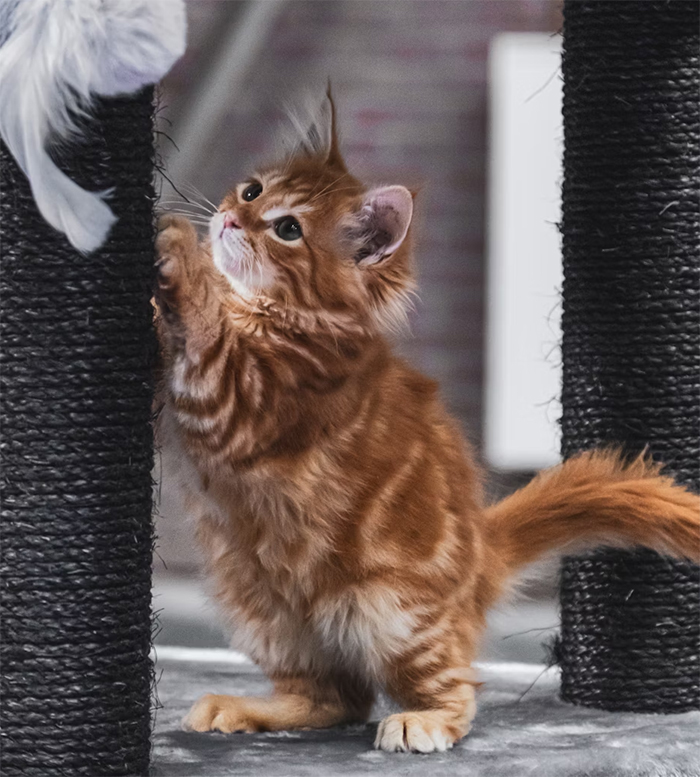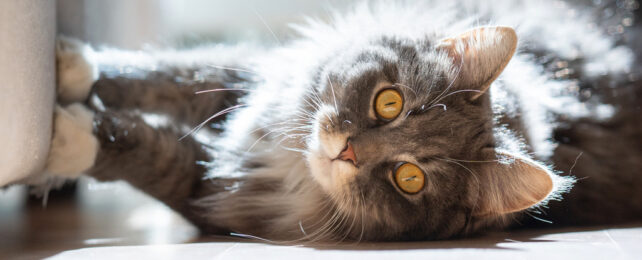While scratching surfaces is a normal cat behavior, a new study explains why some of our beloved clawed floofs are more destructive than others. And no, they're not just trolling you with their rapscallion ways.
"We show that certain factors – such as the presence of children at home, personality traits of cats, and their activity levels – significantly impact the extent of scratching behavior," says veterinary researcher Yasemin Salgirli Demi̇rbas from Ankara University in Türkiye.
It is important to provide cats with surfaces for them to scratch on, as this activity keeps their claws sharp and prevents them from overgrowing and causing health problems. Scratched surfaces also act as a territorial marker, allowing cats to communicate with their fellow felines.
This, however, is where problems can arise. The more frustrated an owner gets at the cat tearing up the expensive leather couch, the more the cat is likely to scratch in response to heightened social tension, according to Salgirli Demi̇rbas and her colleagues from Portugal, Canada, and France.
The researchers surveyed over 1,200 cat owners – all of whom owned just one cat – to discover stress is the leading cause of excessive scratching in domestic cats. While self-reported data is prone to biases, they found a strong association.
"We see a clear link between certain environmental and behavioral factors and increased scratching behavior in cats," says Salgirli Demirbas.
"Specifically, the presence of children in the home as well as high levels of play and nocturnal activity significantly contribute to increased scratching. Cats described as aggressive or disruptive also exhibited higher levels of scratching."
This tells us how we can work with our cats to alter their behavior.

"Providing safe hiding places, elevated observation spots, and ample play opportunities can help alleviate stress and engage the cat in more constructive activities," advises Salgirli Demirba.
So if your cat is scratching where it should not, it is important to use positive reinforcement strategies, and avoid tactics that could exacerbate the cat's stress. Positive tactics include providing an alternative surface for scratching, close to the cat's chosen scratching area.
Cats usually scratch in socially significant areas, likely as a way to express their emotional state. So the location of their scratching post does matter to them.
It is also crucial to play with your feline companion in a way that works for them. Cats who played for extended periods were more likely to scratch more often, possibly from the stress of being overstimulated, the researchers suspect.
"Promoting regular and brief interactive play sessions, coupled with offering suitable toys, can alleviate stress and consequently reduce undesirable scratching behavior," the team recommends in their paper.
Cats really are particular creatures. They have strong preferences about many things, including how we pat them. Trying to pinpoint a specific stressor behind your cat's scratching response could help you work out how to mitigate the problematic behavior.
"Understanding the underlying emotional motivations of scratching behavior, such as frustration, which seem to be linked to personality traits and environmental factors, allows caregivers to address these issues directly," says Salgirli Demirbas.
Calming cat pheromones can help diffuse the situation in the meantime, while other tactics are investigated.
"Our findings can help caregivers manage and redirect scratching to appropriate materials, which could help foster a more harmonious living environment for both cats and their caregivers," Salgirli Demi̇rbas concludes.
Cats have been our companions for over 10,000 years now, protecting our crops, entertaining us, and providing affection. Trying to understand them better is the least we can do in return.
This research was published in Frontiers in Veterinary Science.
